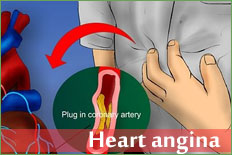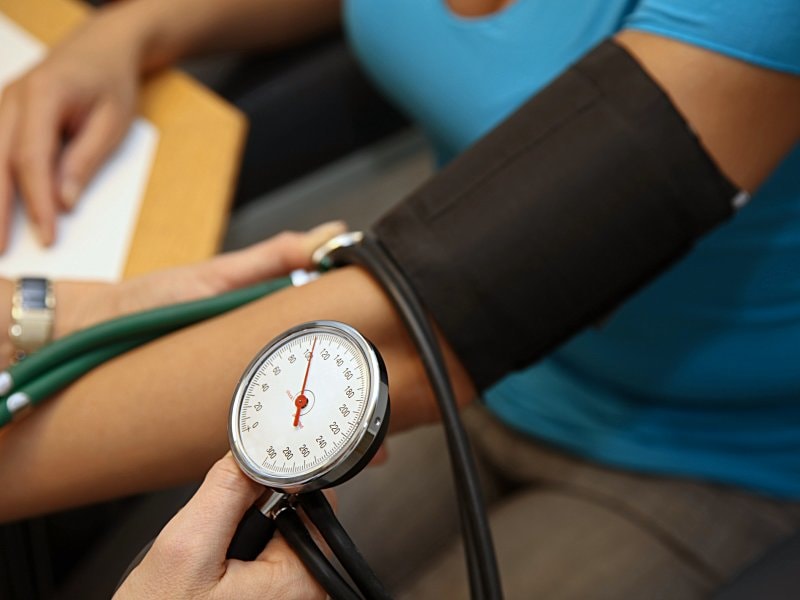Health Centers > Hypertension Health Center > Systemic Hypertension - High Blood Pressure
Systemic Hypertension - High Blood Pressure
Introduction
Fifty million Americans have elevated blood pressure (systolic blood pressure ≥ 140 mm Hg or diastolic blood pressure ≥ 90 mm Hg); of these, 70% are aware of their diagnosis, but only 50% are receiving treatment and only 25% are under control using a threshold criterion of 140/90 mm Hg. The prevalence of hypertension increases with age and is more common in blacks than in whites. The mortality rates for stroke and coronary heart disease, two of the major complications of hypertension, have declined by up to 60% over the past three decades but have recently leveled off. The numbers of patients with end-stage renal disease and heart failure - two other conditions in which hypertension plays a major causative role - continue to rise.
Systemic Hypertension - High Blood Pressure
- Introduction
L Prehypertension - Hypertension Etiology & Classification
L Primary (Essential) Hypertension
L Secondary Hypertension - Complications of Untreated Hypertension
- Hypertension symptoms and signs
- Goals of Hypertension Treatment
- Hypertension Nonpharmacologic Therapy
- Hypertension Drug Therapy
- Developing an Antihypertensive Regimen
- Special Considerations in the Treatment
- Hypertensive Urgencies & Emergencies
L Introduction
L Pharmacologic Management
Cardiovascular morbidity and mortality increase as both systolic and diastolic blood pressures rise, but in individuals over age 50 years, the systolic pressure and pulse pressure are better predictors of complications than diastolic pressure. Table 11-1 provides a summary of the classification and management of blood pressure in adults from the 7th Report of the U.S. Joint National Commission on Prevention, Detection, Evaluation, and Treatment of High Blood Pressure (JNC 7).
How Is Blood Pressure Measured and Hypertension Diagnosed?
Blood pressure should be measured with a well-calibrated sphygmomanometer. The bladder width within the cuff should encircle at least 80% of the arm circumference. Readings should be taken after the patient has been resting comfortably, back supported in the sitting or supine position, for at least 5 minutes and at least 30 minutes after smoking or coffee ingestion.
Hypertension is diagnosed when blood pressure is consistently elevated above 140/90 mm Hg; a single elevated blood pressure reading is not sufficient to establish the diagnosis of hypertension. The major exceptions to this rule are hypertensive presentations with unequivocal evidence of life-threatening end-organ damage, as seen in hypertensive emergency, or in hypertensive urgency where blood pressure is > 220/125 mm Hg but life-threatening end-organ damage is absent. In less severe cases, the diagnosis of hypertension depends on a series of measurements of blood pressure, since readings can vary and tend to regress toward the mean with time.
Patients whose blood pressure is in a hypertensive range initially typically exhibit the greatest fall toward the normal range between the first and second encounters. Although blood pressure readings may still show variability after the third visit, these later changes are mostly random. However, the concern for diagnostic precision needs to be balanced by an appreciation of the importance of establishing the diagnosis of hypertension as quickly as possible, since a 3-month delay in treatment of hypertension in high-risk patients is associated with a twofold increase in cardiovascular morbidity and mortality.
The guidelines of the 2005 Canadian Hypertension Education Program provide an algorithm designed to expedite the diagnosis of hypertension (Figure 11-1). To this end, they recommend short intervals between the initial office visits and the early identification of target organ damage which, if present, obviates the need for protracted confirmation of blood pressure elevation prior to pharmacologic intervention. In addition, the Canadian guidelines exploit the less volatile ambulatory and home blood pressure measurements as complements to office-based evaluations; hypertension is diagnosed at lower levels when based on measurements taken outside the office environment.
Figure 11-1 The 2005 Canadian Hypertension Education Program recommendations for the assessment and diagnosis of hypertension. Patients with an elevated blood pressure measured during visits 4-5 may still have white-coat (office-induced) hypertension. (Applying the 2005 Canadian Hypertension Education Program recommendations: 1. Diagnosis of hypertension - Reprinted from, CMAJ 30-Aug-05; 173(5), Page(s) 480-483 by permission of the publisher. © 2005 CMA Media Inc.)
Prehypertension
Data from the Framingham cohort indicate that blood pressure bears a linear relationship with cardiovascular risk down to a systolic blood pressure of 115 mm Hg; based on these data, it is recommended that individuals with blood pressures in the gray area of 120-139/80-89 mm Hg be categorized as having prehypertension (Table 11-1). This demonstrates a trend away from defining hypertension as a simple numerical threshold and toward a more subtle appreciation of blood pressure as a component of overall cardiovascular risk. Although data concerning the treatment of prehypertension are lacking, the JNC guidelines suggest that antihypertensive medications be offered to persons with prehypertension with compelling indications (Table 11-1).
The British Hypertension Society (BHS) guidelines make similar recommendations but go further by suggesting that antihypertensive medication also be offered to patients with prehypertension who have an elevated projected cardiovascular risk based on Framingham criteria (discussed below). Consequently, a low-risk patient with blood pressure between 120-139/80-89 mm Hg may be advised to make lifestyle modifications (Table 11-2) and be monitored without receiving an absolute diagnosis of prehypertension. Circumspection about labeling patients is warranted since there is evidence that simply telling someone that he or she is hypertensive has unintended consequences, transforming a perception of general health into one of general ill-health. Nonetheless, because prehypertension often develops into hypertension (50% of people within 4 years), even low-risk prehypertensive patients should be monitored annually. To summarize, the diagnosis of hypertension is less important than deciding which patients will benefit from blood pressure reduction as part of a comprehensive risk reduction strategy.
Bibliography
Bolli P et al; Canadian Hypertension Education Program: Applying the 2005 Canadian Hypertension Education Program recommendations: 1. Diagnosis of hypertension. CMAJ 2005;173: 480. [PMID: 16129865]
Chaudhry SI et al: Systolic hypertension in older persons. JAMA 2004;292:1074. [PMID: 15339901]
Chobanian AV et al: The Seventh Report of the Joint National Committee on Prevention, Detection, Evaluation, and Treatment of High Blood Pressure: the JNC 7 Report. JAMA 2003;289: 2560. [PMID: 12748199]
European Society of Hypertension-European Society of Cardiology Guidelines Committee: 2003 European Society of Hypertension-European Society of Cardiology guidelines for the management of arterial hypertension J Hypertens 2003; 21:1011. [PMID: 12777938]
Hart PD et al: Hypertension control rates: time for translation of guidelines into clinical practice. Am J Med 2004;117: 62. [PMID: 15210392]
Kaplan NM et al: Clinical Hypertension, 8th ed. Lippincott Williams & Wilkins, 2002.
Pepine C: What is the optimal blood pressure and drug therapy for patients with coronary artery disease? JAMA 2004;292:2271. [PMID: 15536116]
Pickering TG: Now we are sick: labeling and hypertension. J Clin Hypertens (Greenwich) 2006;8:57. [PMID: 16407691]
Sheridan S et al: Screening for high blood pressure: a review of the evidence for the U.S. Preventive Services Task Force. Am J Prev Med 2003;25:151. [PMID: 12880884]
Williams B et al; British Hypertension Society: Guidelines for management of hypertension: report of the fourth working party of the British Hypertension Society, 2004-BHS IV. J Hum Hypertens 2004;18:139. [PMID: 14973512]


